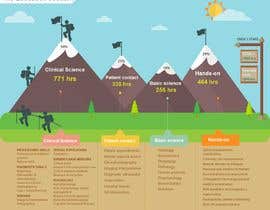Frequent Activities That Contribute To Pain In The Back And Ways To Stop Them
Frequent Activities That Contribute To Pain In The Back And Ways To Stop Them
Blog Article
Content Writer-Carstensen Rosales
Keeping correct pose and avoiding typical challenges in everyday activities can substantially affect your back health and wellness. From how you sit at your workdesk to just how you lift hefty things, tiny modifications can make a big difference. Think of a day without the nagging pain in the back that prevents your every move; the service could be easier than you think. By making a couple of tweaks to your daily behaviors, you could be on your way to a pain-free presence.
Poor Stance and Sedentary Way Of Living
Poor pose and a less active way of life are two significant factors to back pain. When you slouch or suspicion over while resting or standing, you placed unneeded pressure on your back muscle mass and back. This can result in muscle mass discrepancies, tension, and ultimately, chronic neck and back pain. Additionally, sitting for extended periods without breaks or physical activity can damage your back muscle mass and lead to stiffness and discomfort.
To deal with poor pose, make an aware effort to sit and stand right with your shoulders back and aligned with your ears. Bear in mind to keep your feet flat on the ground and prevent crossing your legs for extended durations.
Incorporating normal extending and strengthening workouts into your day-to-day regimen can additionally assist improve your posture and minimize back pain related to a less active way of living.
Incorrect Lifting Techniques
Inappropriate lifting techniques can substantially add to neck and back pain and injuries. When you raise hefty things, bear in mind to flex your knees and use your legs to raise, rather than counting on your back muscle mass. Stay clear of turning your body while training and maintain the things near your body to lower pressure on your back. It's essential to preserve a straight back and prevent rounding your shoulders while lifting to avoid unnecessary stress on your spinal column.
Always examine the weight of the things before lifting it. If it's too heavy, ask for assistance or usage tools like a dolly or cart to deliver it securely.
Keep in mind to take breaks during raising tasks to offer your back muscular tissues an opportunity to rest and avoid overexertion. By executing correct training techniques, you can protect against pain in the back and minimize the risk of injuries, ensuring your back stays healthy and strong for the long-term.
Absence of Routine Workout and Stretching
A sedentary way of life without regular workout and extending can considerably contribute to pain in the back and discomfort. When you do not participate in physical activity, your muscles come to be weak and stringent, bring about poor posture and boosted stress on your back. related web site enhance the muscle mass that support your spine, enhancing stability and minimizing the threat of pain in the back. Integrating stretching right into your regimen can also enhance flexibility, preventing rigidity and discomfort in your back muscle mass.
To prevent pain in the back triggered by an absence of workout and stretching, go for at the very least half an hour of modest exercise most days of the week. Consist of workouts that target your core muscle mass, as a solid core can assist ease pressure on your back.
Additionally, take breaks to extend and move throughout the day, specifically if you have a workdesk job. Simple stretches like touching your toes or doing shoulder rolls can assist relieve tension and protect against back pain. Focusing on regular exercise and stretching can go a long way in keeping a healthy and balanced back and reducing pain.
Conclusion
So, remember to sit up directly, lift with your legs, and stay energetic to prevent back pain. By making basic modifications to your day-to-day routines, you can avoid the discomfort and constraints that feature pain in the back. Care for your spine and muscle mass by exercising excellent stance, correct training strategies, and regular workout. click over here will thanks for it!
